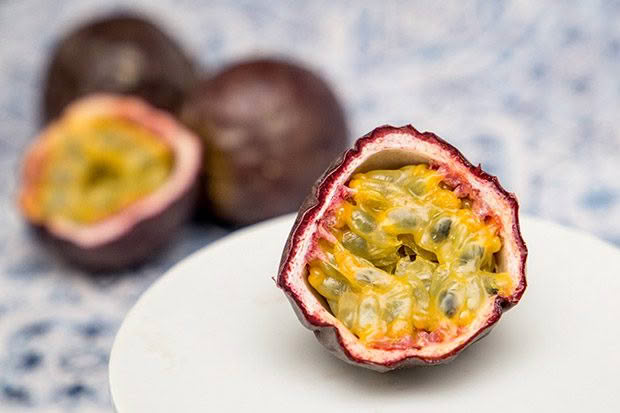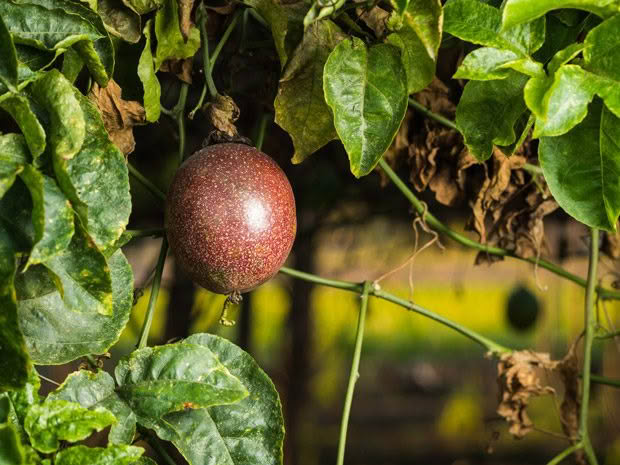How to grow great passionfruit

Passionfruit is a warm-climate plant, but with protection from wind and cold, plants can be grown in cooler areas too. Overseas they’re often grown as indoor plants, but a warm greenhouse will do the trick too.
Words: Jane Wrigglesworth
The common purple passionfruit (Passiflora edulis) is what you typically find in garden centres, although the giant granadilla (Passiflora quadrangularis) is available too. The latter is vigorous, growing up to 15m in one season, and the fruit are as supersized as the plant.
For either species, choose a warm, sunny spot that’s sheltered from wind and frost. Passionfruit will tolerate a slight frost of minus 1-2°C for brief periods, but prolonged or more severe frosts will kill the growing shoots. The giant granadilla is less hardy, tolerating temperatures down to about +1°C.
Both require excellent drainage. A free-draining, friable, sandy loam is best. If your soil is soggy, plants are likely to succumb to disease.
Dig compost and slow-release fertiliser into the soil before planting.
Passionfruit have a shallow but extensive root system, so they need constant moisture. Water regularly while plants are establishing, and especially during flowering and fruiting. Lack of water may cause fruit to shrivel and drop. Consistent watering, on the other hand, ensures almost constant flowering and fruiting.
Use mulch around the base of the plant to help retain moisture, but keep it away from the stem or rot may set in.
Passionfruit are vigorous plants, so feed regularly from spring through autumn with a citrus fertiliser.
TRAINING AND PRUNING

1. Passionfruit make great espalier subjects and are best trained in their initial years. Select vigorous shoots to establish a framework and train them along horizontal wires. Fruiting stems grow off these horizontal laterals. As fruit is formed on the current season’s wood, an annual prune is beneficial. Prune each year around late September or early October, when the plants begin to grow vigorously. Cut the fruiting stems back to two buds, or about 10-15cm.
2. Remove any dying stems as passionvine hoppers often lay their eggs here. You can easily spot the eggs which are about 1mm in length and inserted in the stems in neat rows. These bugs aren’t confined to passionfruit vines though and also lay their eggs on other fruit and ornamental plants.
3. Ripe fruit falls to the ground, but you can also pick it earlier – when you see it change colour and shrivel slightly – as passionfruit continues to ripen off the vine.
Love this story? Subscribe now!
 This article first appeared in NZ Lifestyle Block Magazine.
This article first appeared in NZ Lifestyle Block Magazine.
